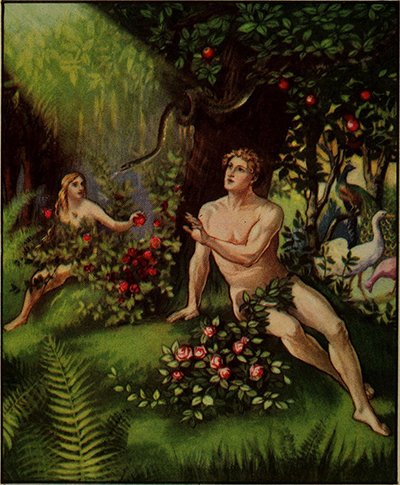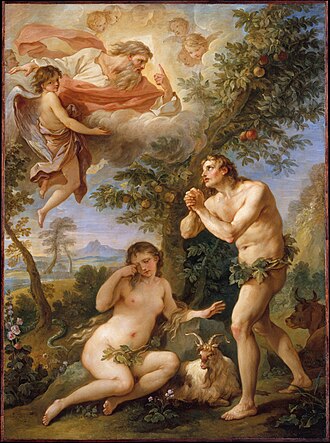Introduction
The tale of Adam and Eve in the Garden of Eden is one of the most enduring stories in human history. It has been told and retold across generations, sparking endless discussions and interpretations. The narrative, steeped in symbolism and meaning, goes beyond its biblical roots to pose profound questions about human nature, free will, and morality. But what exactly happened in that lush, divine garden? How did Adam and Eve’s choices shape the course of humanity? Let’s embark on a journey back to the very beginning, exploring the depths of this ancient story with fresh eyes.
The Creation of Adam and Eve
The story begins in the Book of Genesis, the first book of the Bible, where God is depicted as the ultimate creator. After crafting the heavens, the earth, the seas, and all living creatures, God decided to create humanity in His own image. Adam, the first human, was formed from the dust of the ground. He was placed in the Garden of Eden, a paradise designed specifically for him, full of lush vegetation, gentle rivers, and all the food he could ever need.
God saw that Adam needed a companion, someone to share his life and experiences with. So, He caused Adam to fall into a deep sleep, took one of his ribs, and created Eve, the first woman. Together, Adam and Eve were tasked with stewarding the garden and living in harmony with all of creation. But their idyllic existence came with one rule: they were forbidden to eat from the Tree of the Knowledge of Good and Evil.
The Garden of Eden: A Paradise Like No Other
The Garden of Eden was more than just a physical location; it was a symbol of God’s perfect creation, a place where harmony reigned supreme. The Bible describes it as a place of unparalleled beauty, teeming with vibrant flora and fauna. Imagine a garden where every fruit is ripe for the picking, where streams of water flow gently, nourishing the rich, fertile soil. It was here, in this perfect environment, that Adam and Eve enjoyed their early days.
The Garden was home to two significant trees: the Tree of Life and the Tree of the Knowledge of Good and Evil. The former symbolized eternal life, a gift freely available to Adam and Eve. The latter, however, was a test—a test of obedience and trust in God’s command. The presence of these trees set the stage for the choices that would ultimately define human existence.

The Serpent’s Temptation: A Turning Point
In the midst of this paradise, a serpent entered the scene. This was no ordinary serpent but one that could speak, embodying cunning and deceit. The serpent approached Eve with a simple yet profound question: “Did God really say, ‘You must not eat from any tree in the garden’?” This question was more than mere curiosity; it was a seed of doubt.
Eve responded by clarifying that they could eat from any tree except the Tree of the Knowledge of Good and Evil, warning that death would follow if they did. But the serpent, ever so cunning, countered, “You will not surely die. For God knows that when you eat of it, your eyes will be opened, and you will be like God, knowing good and evil.” This statement was the spark that ignited Eve’s curiosity and desire.
The First Act of Disobedience
Eve, tempted by the prospect of wisdom and knowledge, took the fruit from the forbidden tree and ate it. She then gave some to Adam, who also ate. In that moment, their eyes were indeed opened. But rather than feeling empowered, they felt a profound sense of shame and guilt. They realized their nakedness and sewed fig leaves together to cover themselves.
This act of eating the forbidden fruit, often referred to as “The Fall,” was the first act of human disobedience against God’s command. It marked a pivotal moment in the story of humanity, introducing the concepts of sin, guilt, and moral responsibility.

The Consequences of Their Actions
When God discovered their disobedience, He asked Adam and Eve why they had eaten from the tree. Adam blamed Eve, and Eve blamed the serpent. This blame-shifting highlighted the immediate impact of sin—fractured relationships, not only between humans and God but also between each other.
God then pronounced His judgment. The serpent was cursed to crawl on its belly and eat dust for the rest of its days. Eve was told that she would experience pain in childbirth and be subject to her husband’s authority. Adam was told that he would toil and sweat for his food, and the ground itself would be cursed because of his actions.
These judgments were not just punishments; they were consequences that reverberated throughout human history, altering the very fabric of existence. The ease and harmony of life in Eden were replaced by hardship, labor, and mortality.
Expulsion from Eden: The Loss of Paradise
After pronouncing judgment, God made garments of skin for Adam and Eve, clothing them more adequately than their fig leaves could. This act, while seemingly practical, also symbolized a covering of their shame—a foreshadowing of redemption.

God then banished them from the Garden of Eden to prevent them from eating from the Tree of Life and living forever in a state of sin. An angel with a flaming sword was placed at the entrance of the garden to guard the way to the tree, ensuring that humanity could not return to its once-perfect state.
The expulsion from Eden was more than a physical relocation; it was a spiritual exile. Adam and Eve’s intimate relationship with God was altered forever, replaced by a life of separation and struggle. Yet, even in this judgment, there was a glimmer of hope—a promise of future redemption.
The Symbolism of the Garden of Eden
The Garden of Eden represents more than just the beginning of humanity; it symbolizes innocence, purity, and the ideal relationship between humans and their Creator. The presence of the two trees, the Tree of Life and the Tree of Knowledge, serves as metaphors for choice and consequence. The serpent embodies deception and the ever-present potential for doubt and rebellion against divine will.
This story also serves as an allegory for every human experience. It is about the choices we make, the consequences we face, and the grace we hope for. The Garden of Eden narrative is timeless because it encapsulates the human condition in its entirety—our capacity for good and evil, our quest for knowledge, and our need for redemption.
Free Will and the Nature of Choice
One of the most profound aspects of the Adam and Eve narrative is its exploration of free will. By placing the Tree of Knowledge in the garden and forbidding its fruit, God gave Adam and Eve a choice. This choice is fundamental to understanding the human experience. Free will allows for love and trust, but it also opens the door to disobedience and sin.
The choice to eat the fruit was about exercising autonomy and the desire to gain knowledge and be like God. This desire, while misguided, reflects humanity’s intrinsic longing for knowledge and power. But with great power comes great responsibility, and Adam and Eve’s choice came with a heavy price.
The Legacy of Adam and Eve
The story of Adam and Eve still influences religious, cultural, and philosophical discussions today. It raises questions about human nature, morality, and the origins of sin. It urges reflection on temptation’s role in our lives and the significance of obedience and trust in a higher power.
In many ways, the legacy of Adam and Eve is a story of loss—loss of innocence, paradise, and direct communion with God. But it is also a story of hope. Even after the fall, God’s actions—clothing Adam and Eve and promising future redemption—hint at a plan for restoration and reconciliation.
Modern Interpretations and Relevance
Today, the story of Adam and Eve can be seen as a reflection of human life and its complexities. It’s about making choices, facing consequences, and seeking forgiveness. It reminds us that while we may stray from the path of righteousness, there is always a way back, a possibility of redemption.
In a broader context, the narrative speaks to the human condition: our perpetual struggle between good and evil, knowledge and ignorance, obedience and rebellion. It serves as a reminder that our choices, big and small, shape our lives and our world.
The Promise of Redemption
Despite the fall and subsequent expulsion from Eden, the story of Adam and Eve is ultimately a tale of redemption. God’s provision of garments and His promise of a future savior highlight His mercy and love. It suggests that while sin may have entered the world through Adam and Eve, so too does grace and the promise of salvation.
This theme of redemption is echoed throughout the Bible and is central to Christian theology. It underscores the belief that no matter how far we stray, there is always a path back to grace, a way to restore our broken relationship with God.
Conclusion
The story of Adam and Eve in the Garden of Eden is more than just a tale of beginnings; it is a complex narrative that addresses the core of the human experience. It speaks to our nature, our choices, and the consequences that follow. It challenges us to reflect on our own lives, our relationship with the divine, and our understanding of morality and free will. Above all, it reminds us of the enduring hope of redemption—a hope that has sustained humanity through the ages.
Read Related Posts
5 Books to Aid Your Spiritual Growth: A Journey of Faith and Transformation
Unveiling the Profound Differences Between the Old Testament and the New Testament
The Role of Faith in Overcoming Life’s Challenges
FAQs
The Tree of Knowledge symbolizes free will, moral choices, and the introduction of sin and mortality.
To give Adam and Eve free will and the ability to choose obedience or disobedience.
The serpent represents temptation, deception, and the presence of evil that leads humans away from God.
They faced hardship, labor, and mortality, separated from God’s presence.
The importance of obedience, consequences of choices, and the hope for redemption.


